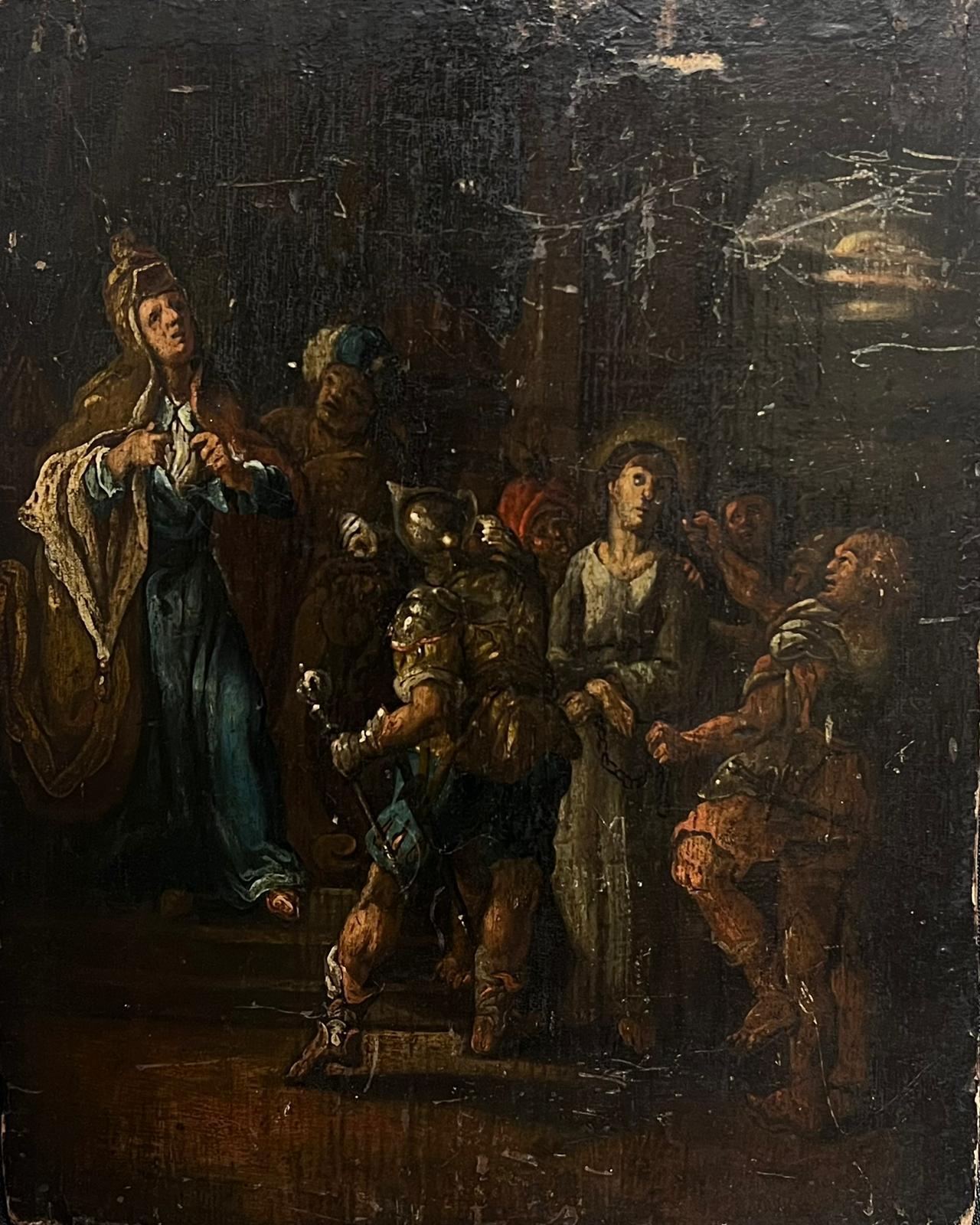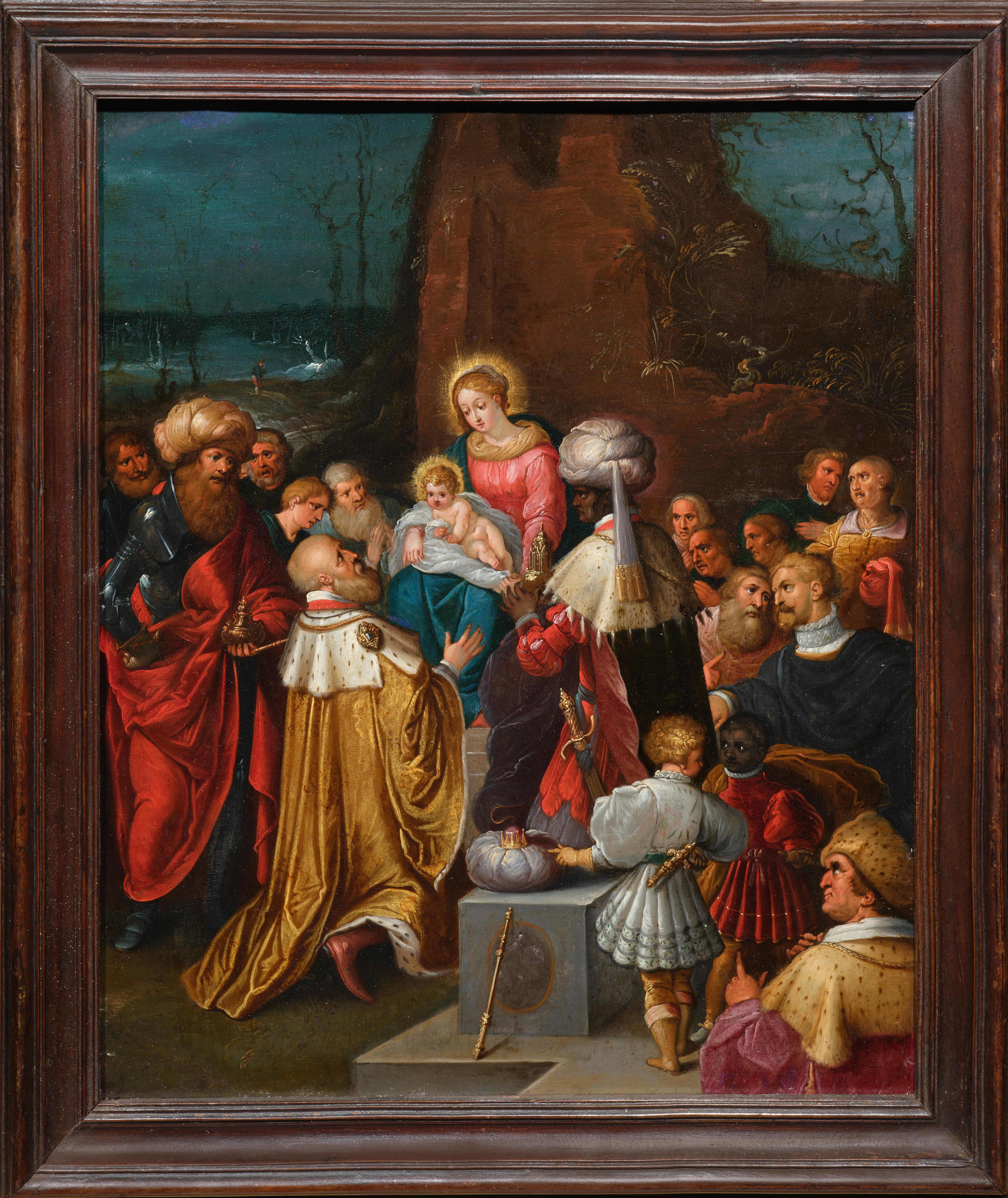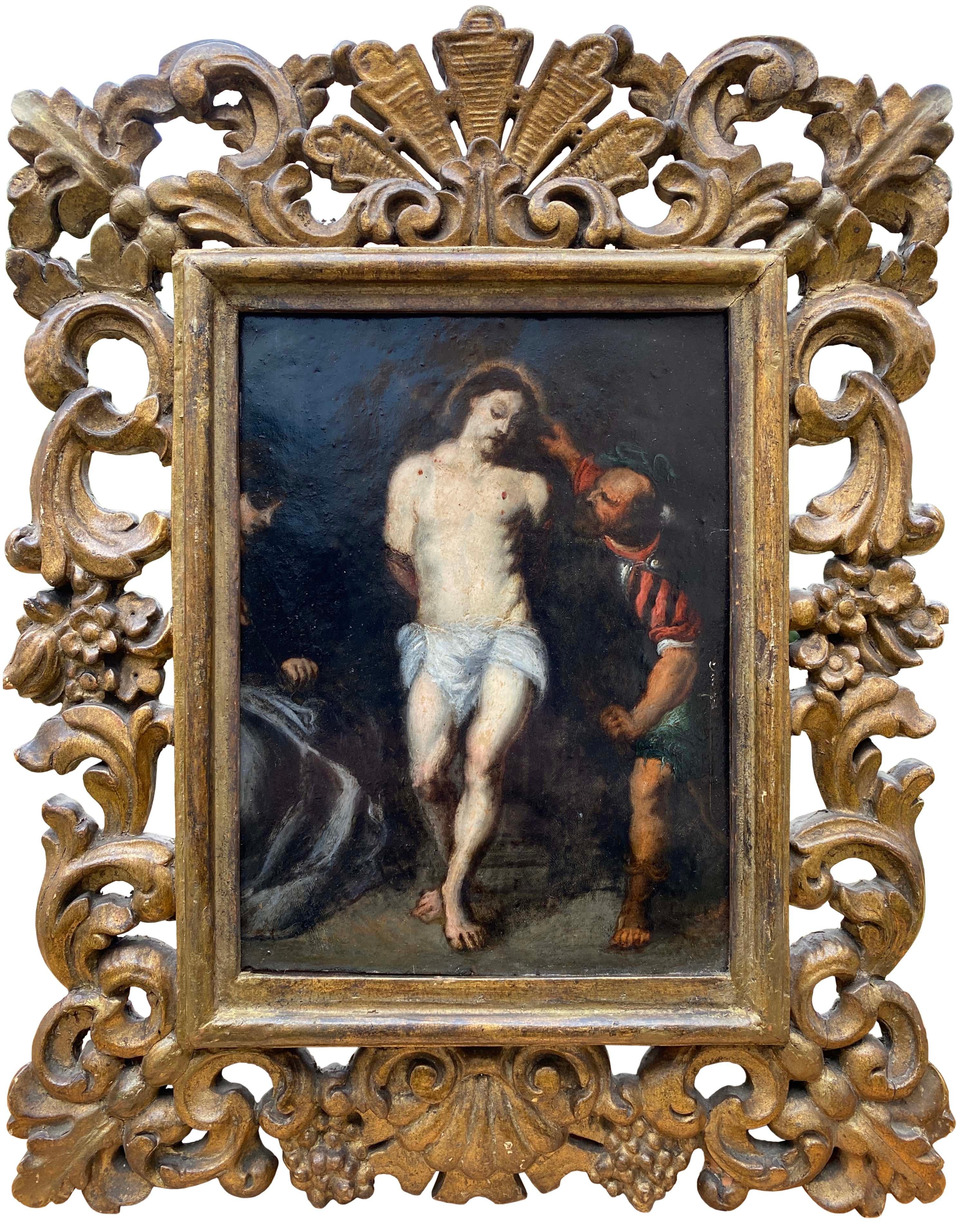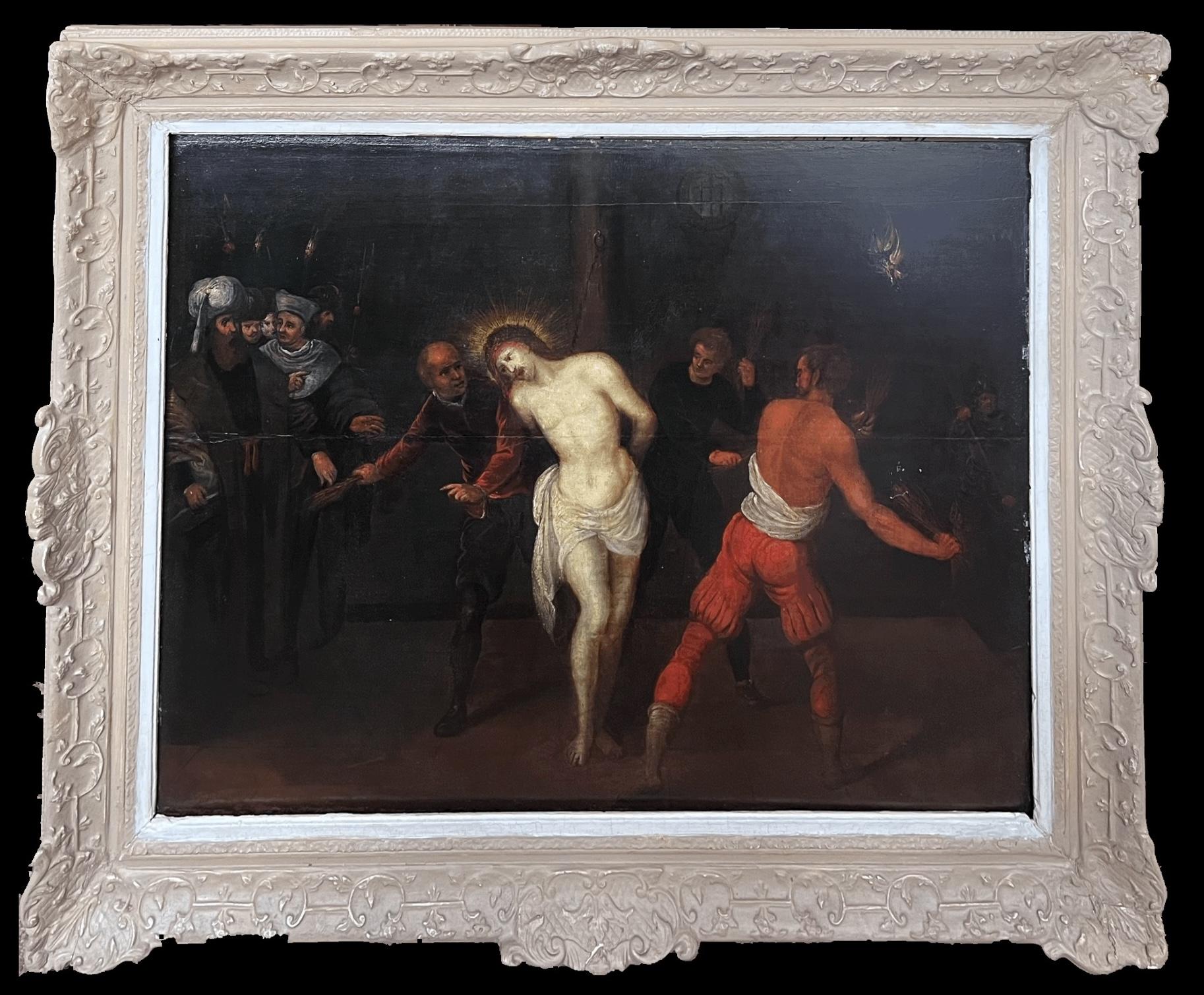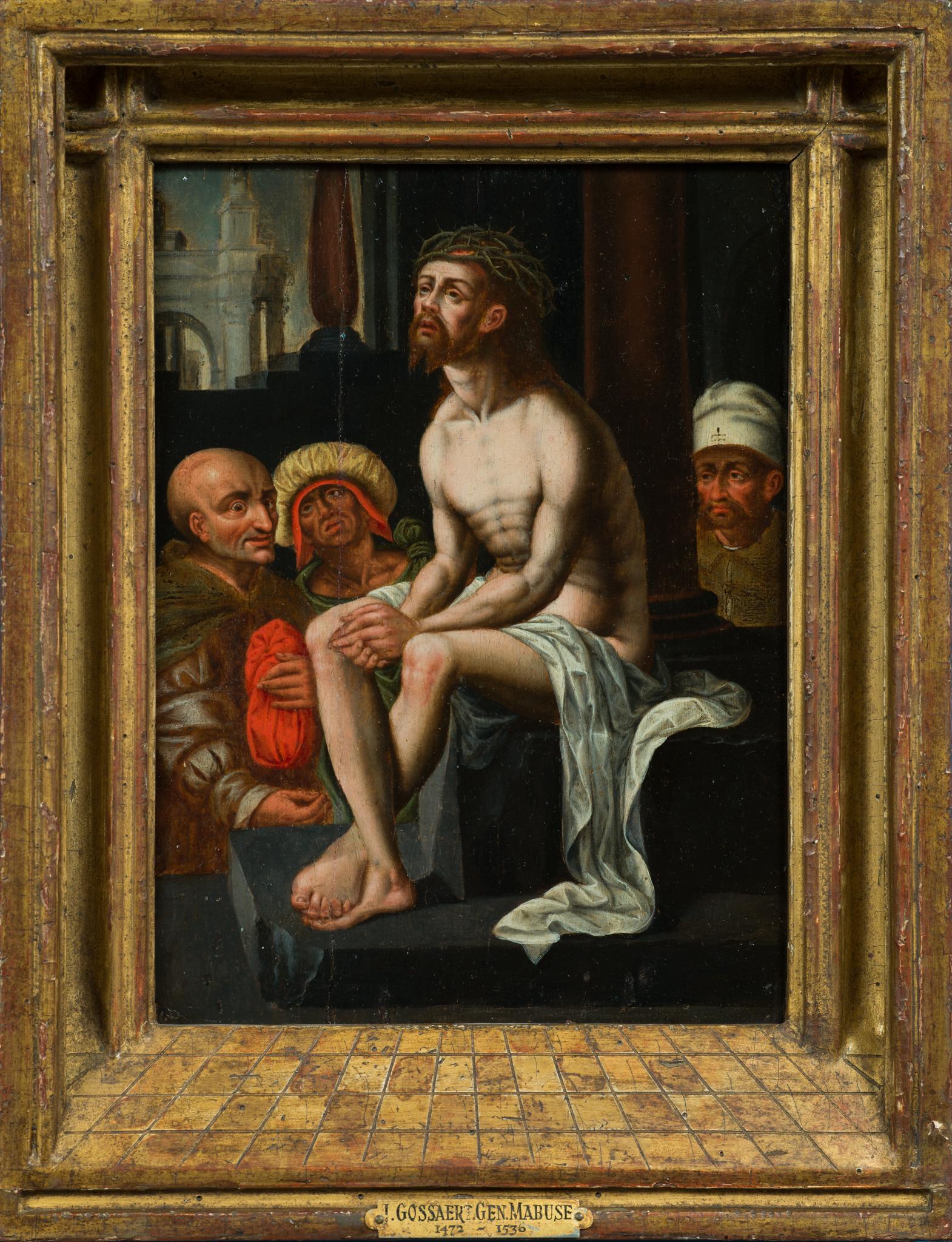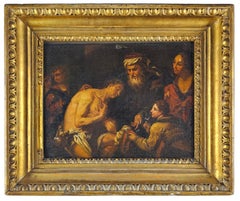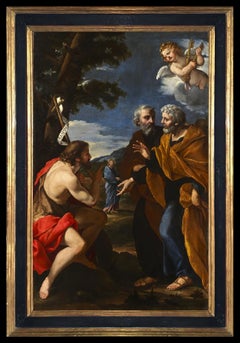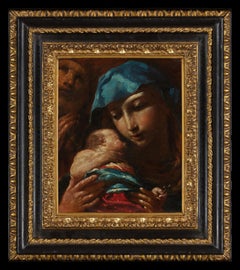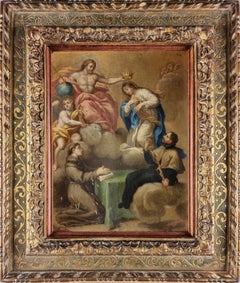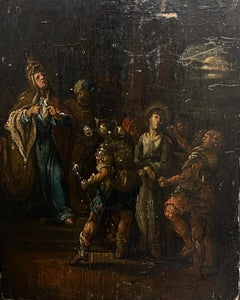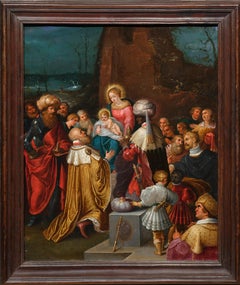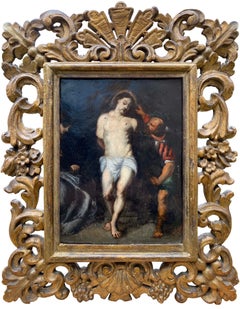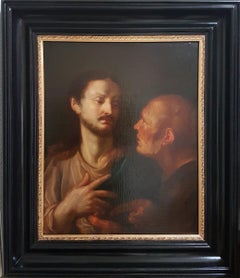Items Similar to Mocking of Christ, by Frans Francken (II) and possibly Ambrosius Francken (II)
Want more images or videos?
Request additional images or videos from the seller
1 of 13
Mocking of Christ, by Frans Francken (II) and possibly Ambrosius Francken (II)1620-1625
1620-1625
$5,200
$12,00056% Off
£3,939.99
£9,092.2856% Off
€4,520.82
€10,432.6756% Off
CA$7,317.24
CA$16,885.9456% Off
A$8,043.66
A$18,562.2956% Off
CHF 4,227.38
CHF 9,755.4956% Off
MX$97,679.32
MX$225,413.8156% Off
NOK 52,735.48
NOK 121,697.2656% Off
SEK 49,963.16
SEK 115,299.6056% Off
DKK 33,740.04
DKK 77,861.6356% Off
About the Item
Mocking of Christ, with all around in grisaille: the Crucifixion, the Resurrection, God the Father, Mankind after the Fall,; in the corners the four evangelists.
J. Dijkstra ao, cat. The paintings of Museum Catharijneconvent, Utrecht (Museum Catharijneconvent) 2002, p. 196, pict., as Frans Francken II and Ambrosius Francken II (?), 1620-1625
- Attributed to:Frans Francken II (1581 - 1642, Flemish)
- Creation Year:1620-1625
- Dimensions:Height: 14.18 in (36 cm)Width: 11.42 in (29 cm)Depth: 0.4 in (1 cm)
- Medium:
- Movement & Style:
- Period:
- Condition:
- Gallery Location:New York, NY
- Reference Number:1stDibs: LU159928526842
About the Seller
5.0
Vetted Professional Seller
Every seller passes strict standards for authenticity and reliability
Established in 2007
1stDibs seller since 2021
44 sales on 1stDibs
Typical response time: 2 hours
- ShippingRetrieving quote...Shipping from: Recoleta, Argentina
- Return Policy
Authenticity Guarantee
In the unlikely event there’s an issue with an item’s authenticity, contact us within 1 year for a full refund. DetailsMoney-Back Guarantee
If your item is not as described, is damaged in transit, or does not arrive, contact us within 7 days for a full refund. Details24-Hour Cancellation
You have a 24-hour grace period in which to reconsider your purchase, with no questions asked.Vetted Professional Sellers
Our world-class sellers must adhere to strict standards for service and quality, maintaining the integrity of our listings.Price-Match Guarantee
If you find that a seller listed the same item for a lower price elsewhere, we’ll match it.Trusted Global Delivery
Our best-in-class carrier network provides specialized shipping options worldwide, including custom delivery.More From This Seller
View All17 Century Italian School panel, The return of the prodigal son
Located in New York, NY
17th Century Italian School, wood panel, depicting the return of the prodigal son. Very good condition.
Category
17th Century Figurative Paintings
Materials
Oil, Wood Panel
$2,072 Sale Price
20% Off
St. John the Baptist pointing out (revealing) Christ
Located in New York, NY
Giovanni Francesco Romanelli (born Viterbo 1612; died Viterbo 1662)
St. John the Baptist pointing out (revealing) Christ, in the far distance, to Simon Peter and Andrew.
Oil on can...
Category
17th Century Baroque Figurative Paintings
Materials
Canvas, Oil
Holy Family, by the bolgonese master.
By Giuseppe Maria Crespi, Lo Spagnuolo
Located in New York, NY
This exquisite painting, resembling a precious jewel, serves as an exceptional illustration of the devotional cabinet paintings created by Giuseppe Maria Crespi, a highly original Bolognese artist during the late 17th and early 18th centuries. Crespi's distinctiveness extended beyond his unique style and technique to the subjects he chose to portray. While his portraits and genre paintings often displayed a light-hearted and even irreverent tone, his treatment of religious themes resonated with deep emotion, even in its most inventive forms.
This recently uncovered work by Crespi is a typical representation, invoking the tender
connection between mother and child, and the Child's destiny, all within a compact and intimate format. Executed on a small scale, the painting showcases Crespi's remarkable sensitivity and mastery of paint, especially evident in the expressive brushwork of the drapery.
The restrained and focused composition of the Holy Family allows for contemplation of the figures. Mary cradles the Christ child gently, seemingly presenting him to the viewer, her gaze
knowing as the infant holds a diminutive cross, symbolizing his future crucifixion. Joseph appears in the background, emerging from the left side of the frame, gazing upward with folded hands in prayer.
Individual motifs from this painting reappear in other works by Crespi, suggesting a synthesis of familiar elements into a vibrant composition. The artist's revisitation of designs throughout his career is evident, and this painting on copper likely belongs to a later period, reflecting stylistic ties to other works and Crespi's increased production of smaller devotional pieces.
Distinguished by its cool palette, bold coloration, and the expressive force of the artist's hand, this Holy Family painting...
Category
Early 1700s Baroque Figurative Paintings
Materials
Copper
$30,400 Sale Price
27% Off
Free Shipping
Coronation of the Virgin, oil on copper, circle of Sebastiano Conca
By Sebastiano Conca
Located in New York, NY
The Coronation of the Virgin. Oil on copper.
All of our works are covered by our own guarantee of authenticity which covers the work for its ...
Category
18th Century Old Masters Figurative Paintings
Materials
Copper
Sanguine drawing "Shepherdess on a Donkey" by Nicolaes Berchem
By Nicolaes Berchem
Located in New York, NY
Provenance: Mercedes von Dietrichtein, Buenos Aires. Alexander von Dietrichstein. By descendants Morritz von Diestrichstein.
Nicolaes Pieterszoon Berchem (1 October 1620 – 18 February 1683) was a highly esteemed and prolific Dutch Golden Age painter of pastoral landscapes, populated with mythological or biblical figures, but also of a number of allegories and genre pieces.
He was a member of the second generation of "Dutch Italianate landscape" painters. These were artists who travelled to Italy, or aspired to, in order to soak up the romanticism of the country, bringing home sketchbooks full of drawings of classical ruins and pastoral imagery. His paintings, of which he produced an immense number, (Hofstede de Groot claimed around 850, although many are misattributed), were in great demand, as were his 80 etchings and 500 drawings. His landscapes, painted in the Italian style of idealized rural scenes, with hills, mountains, cliffs and trees in a golden dawn...
Category
17th Century Dutch School Figurative Drawings and Watercolors
Materials
Paper, Chalk
Susanna and the Elders & Marriage of the Virgin. French pair, 18th Century.
Located in New York, NY
Pair of late 18th Century french oil paintings, representing the story of Susanna and the Elders & The Marriage of the Virgin.
Category
Late 18th Century Figurative Paintings
Materials
Canvas, Oil
You May Also Like
Fine Quality 17th Century Dutch Old Master Oil on Wood Panel Trial of Christ
Located in Cirencester, Gloucestershire
The Trial of Christ
Dutch Old Master, 17th century
oil on panel, unframed
panel: 11 x 7.5 inches
provenance: private collection, England,
Christies auction stencil marks verso
condi...
Category
17th Century Baroque Portrait Paintings
Materials
Oil, Wood Panel
The Adoration of the Magi, an early painting by Frans Francken II (1581 - 1682)
By Frans Francken II
Located in PARIS, FR
We would like to thank Dr. Ursula Härting who, after examining the work, confirmed the autograph nature of this painting by Frans Francken the Younger in a certificate issued on December 9, 2024.
In this previously unpublished painting coming from a French private collection, Frans Francken the Younger tackles one of his favorite themes: the adoration of the Magi, the wise men who come from the East to adore the infant Jesus in Bethlehem, Judea. This theme was often taken up by the artist, but this version, which can be dated around 1610, is one of the earliest interpretations.
1. Frans Francken the Younger, "a surprisingly inventive painter".
Frans Francken the Younger is the best-known member of an extended artistic family that worked in Antwerp from the late sixteenth to the late seventeenth century. Born in 1581, he almost certainly studied with his father, Frans Francken the Elder (c. 1542-1616), before becoming a master in the Antwerp Saint Luke's Guild in 1605. In 1627 he became a member of the Antwerp archers' guild De Oude Handboog.
Francken was an extremely productive and imaginative artist who specialized in expressively rendered small-scale religious and mythological scenes. He also painted larger altarpieces for Catholic churches. His depictions of collectors' cabinets introduced a genre of painting that influenced several artists, including Jan Brueghel the Elder...
Category
1610s Old Masters Figurative Paintings
Materials
Copper
The Flagellation of Christ, Old Master, Flemish School, Oil on copper
Located in Knokke, BE
The Flagellation of Christ
Old Master
Flemish School
17th century
Medium: Oil on copper
Dimensions: Image size 22 x 17 cm, frame size 39 x 31 cm
Category
17th Century Baroque Portrait Paintings
Materials
Copper
$12,984 Sale Price
30% Off
Religious Flemish Painting Jesus Satan Temptation Tribute Baroque 17th 18th
Located in PARIS, FR
Flemish school 17th or 18th century
Circle of Thomas WILLEBOIRTS BOSSCHAERT (Berg-op-Zoom, 1613 - Antwerp, 1654)
Oil on canvas
72 x 59 cm (90 x 77 cm with frame)
This work has been painted in a style close to the Antwerp school of the middle of the 17th century, to Anton van Dyck especially. We have found in particular several paintings similar to our painting in the works of Thomas Willeboirts Bosschaert.
After having studied with Gerard Seghers...
Category
Early 18th Century Baroque Figurative Paintings
Materials
Oil
$4,308 Sale Price
20% Off
17th Century Flemish Baroque Old Master Oil on Panel Flagellation of Christ
Located in Cirencester, Gloucestershire
The Flagellation of Christ
Flemish Baroque, 17th century
oil on wood panel, framed
framed: 31 x 42 inches
wood panel: 19.5 x 26 inches
Provenance: pri...
Category
17th Century Baroque Figurative Paintings
Materials
Oil, Wood Panel
Christ on the Cold Stone – After Jan Gossaert (Mabuse)
Located in Stockholm, SE
This striking devotional image, painted by a follower of Jan Gossaert, represents one of the most influential compositions of the Northern Renaissance: Christ on the Cold Stone, or C...
Category
16th Century Old Masters Figurative Paintings
Materials
Oil, Wood Panel
